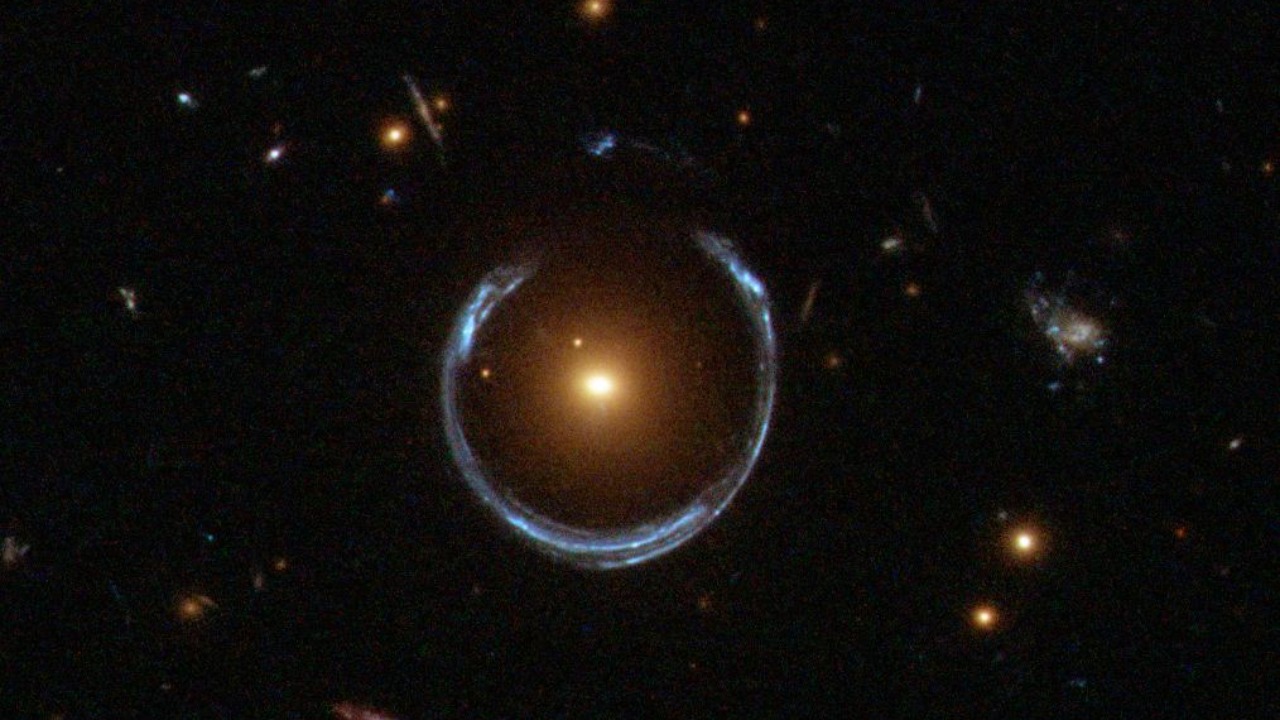
Astronomers have made a groundbreaking discovery of a ‘dark object’ concealed within a warped ‘Einstein ring’ located 10 billion light-years away. This significant finding advances our understanding of gravitational lensing and cosmic mysteries. The object’s elusive nature is revealed through the distortion of light from a distant galaxy, highlighting how such phenomena can conceal massive, invisible structures in the universe. This discovery, reported on October 16, 2025, underscores the potential of gravitational lensing to uncover hidden cosmic features.
Understanding Einstein Rings
Einstein rings are fascinating cosmic phenomena resulting from the gravitational lensing effect, where massive objects like galaxies or black holes bend spacetime. This bending causes the light from a background source, such as a distant galaxy, to form a ring-like structure around the foreground lens. The perfect or warped rings of light are not only visually striking but also serve as powerful tools for astronomers to study the universe’s hidden aspects. In this particular case, the warped Einstein ring was formed due to the precise alignment of a foreground lens and a distant light source, located an astonishing 10 billion light-years away (Live Science).
Detecting distortions within Einstein rings poses significant observational challenges. The warping of light can obscure embedded features, making it difficult to identify anomalies that might indicate the presence of hidden objects. This complexity requires advanced observational techniques and high-resolution imaging to discern the subtle deviations in the light path that suggest the existence of massive, unseen structures. The discovery of the dark object within this warped ring exemplifies the intricate dance of light and gravity, revealing the universe’s hidden depths.
The Nature of the Dark Object
The ‘dark object’ discovered within the Einstein ring is record-breaking due to its massive size and invisibility to direct light detection. It is detectable only through its gravitational effects, which distort the light from the background galaxy. This characteristic makes it a compelling subject for study, as it challenges our understanding of cosmic structures that do not emit or reflect light in conventional ways (Live Science).
Potential compositions of the dark object include a black hole or a cluster of dark matter. These possibilities are inferred from the gravitational influence observed within the ring, which suggests a significant mass capable of bending light. The object’s position, ‘hiding’ within the ring, was deduced from anomalies in the light path, indicating its presence despite its invisibility. This discovery opens new avenues for exploring the nature of dark matter and other enigmatic cosmic entities.
Discovery Process and Observations
The discovery of the warped Einstein ring and the hidden dark object was made possible through the use of advanced telescopes and instruments. High-resolution imaging played a crucial role in revealing the hidden object 10 billion light-years away. The precise technology allowed astronomers to capture the subtle distortions in the light path, leading to the identification of the dark object (Live Science).
To analyze the data, scientists employed sophisticated modeling techniques to isolate the dark object’s signature from the surrounding cosmic noise. This process involved simulating the lensing effects and comparing them with the observed light patterns to pinpoint the anomalies caused by the hidden mass. The timeline of the discovery included initial detection, followed by rigorous confirmation steps, culminating in the announcement on October 16, 2025. This meticulous approach underscores the importance of precision and patience in unraveling the universe’s mysteries.
Implications for Cosmology
This record-breaking discovery enhances our models of dark matter distribution and galaxy formation over 10 billion light-years of cosmic history. By understanding how massive, invisible structures like the discovered dark object influence their surroundings, scientists can refine their theories about the universe’s evolution and the role of dark matter in shaping cosmic landscapes (Live Science).
The broader applications of studying Einstein rings extend to uncovering other hidden cosmic structures. As astronomers continue to explore these phenomena, they can potentially reveal more about the universe’s unseen components, offering insights into the fundamental forces that govern cosmic dynamics. Future observational prospects include follow-up studies to measure the dark object’s properties more precisely, paving the way for new discoveries and a deeper understanding of the universe’s hidden architecture.